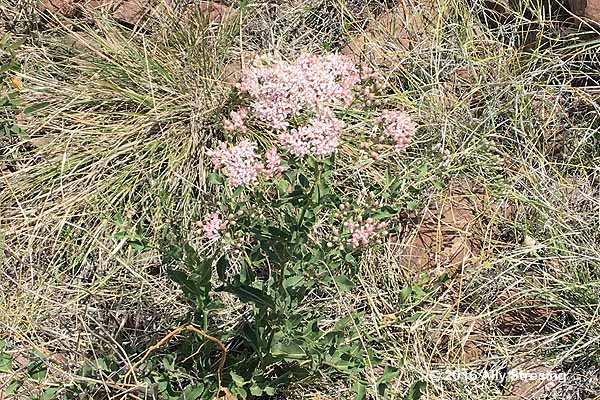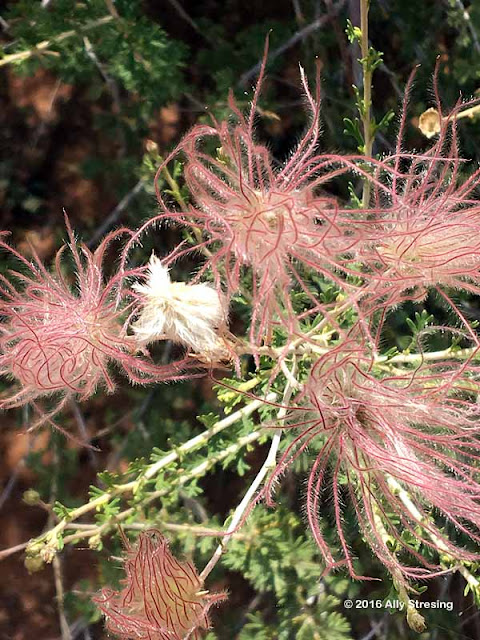At first glance, there doesn't appear to be much going on in the landscape. At 6,000 feet, the Davis Mountains are the high dessert of Texas.
As I was hiking, I started to notice that the landscape was not as empty as it first appeared. The little pops of color that grabbed my attention were made more special by their rareness.
I started to see plants that I recognized, like these purple verbena and silver pony's foot. These plants have not been living the easy life. They were stunted and hardened by a life of too little water and plenty of sun, but they are survivors.
Then, I saw some plants that really attracted my attention. This is mullein growing wild and proud. I have no idea why I like this plant so much. Probably because I like plants with interesting stories and I've heard it said that Indians used mullein as toilet paper. It's certainly soft and fuzzy enough. I bet it would put Charmin to shame.
I saw clusters of cholla cactus blooming here and there until we took the scenic loop drive through the mountains, then there were forests of cholla blooming for as far as the eye could see.
The ocotillo were not as plentiful, but a spotted a few.
I'm not sure why, but when I buy plants at the nursery, I don't always connect them to plants that grow wild somewhere in the world. Well, Davis Mountains was like a Texas native plants family reunion. I saw so many plants that are in my garden. I was amazed. See if you recognize any of these.
I even saw kidneywood blooming in the wild, well, actually, I smelled it first.
I'm saving the best for last. This plant was completely new to me. It's called Apache Plume. These plants were everywhere. Heck, it's probably a weed in the Davis Mountains, but I thought it really stood out. Perhaps this wild thing will be coming to a nursery near you soon.































